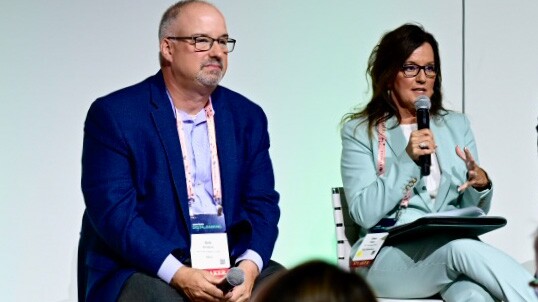
Bank Independent and State Employees Credit Union of Maryland shared their experiences with offering virtual branches at American Banker's Digital Banking conference this week.
There's not a unified template for what products or services make up a digital branch, but most offer standard functions like account opening, deposit transfers and meetings with customer support staffers through an online consumer-facing portal.
Research released by Cornerstone Advisors found that 27% of bank respondents said they planned to select a new or replacement application for consumer digital account opening this year. A greater share of credit union executives surveyed, roughly 36%, also named digital account opening tech as their top pick.
Some institutions, such as the $4.2 billion-asset PeoplesBank in Holyoke, Massachusetts, have spun up separate digital brands to
The $5.5 billion-asset State Employees Credit Union of Maryland in Linthicum launched its virtual financial center in October 2020. The goal was to provide members with a platform that combines mobile banking tools and video conferencing software. The initiative proved successful as the world shifted to digital during the COVID-19 pandemic, according to credit union executives.
Services offered include debit card issuance, virtual meetings with advisors, loan applications and more — all with hours that extend beyond physical branch operations.
Since its debut, the platform has recorded more than 15,000 appointments per year and is the credit union's top performing financial center for membership applications, home equity line of credit loans, auto loans and more.
Executives at Bank Independent, located in Sheffield, Alabama, with $2.7 billion of assets, began exploring the prospect of a digital sales office in 2017. The campaign combined the bank's suite of interactive teller machines and mobile banking products with an online customer platform for connecting to virtual relationship banking representatives.
The digital sales office has recorded an increase of 6,500 monthly mobile deposits when compared to 2017, and has seen similar growth in ATM deposits and online account applications.
Some efforts are not solely digital, but rather a
At American Banker's Digital Banking conference in Boca Raton this week, Erik Schwink, assistant vice president and virtual engagement leader for SECU of Maryland, and Stacy Suggs, executive vice president and chief operations officer for Bank Independent, both dove into their strategies for launching a digital branch.
Responses are edited for clarity.










